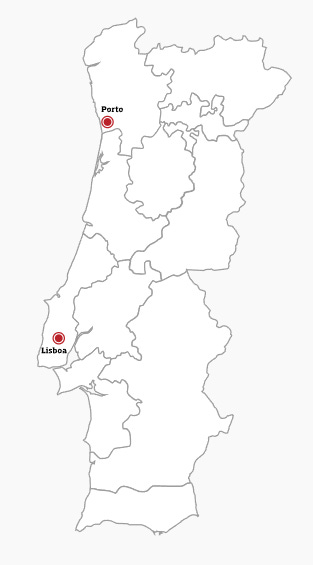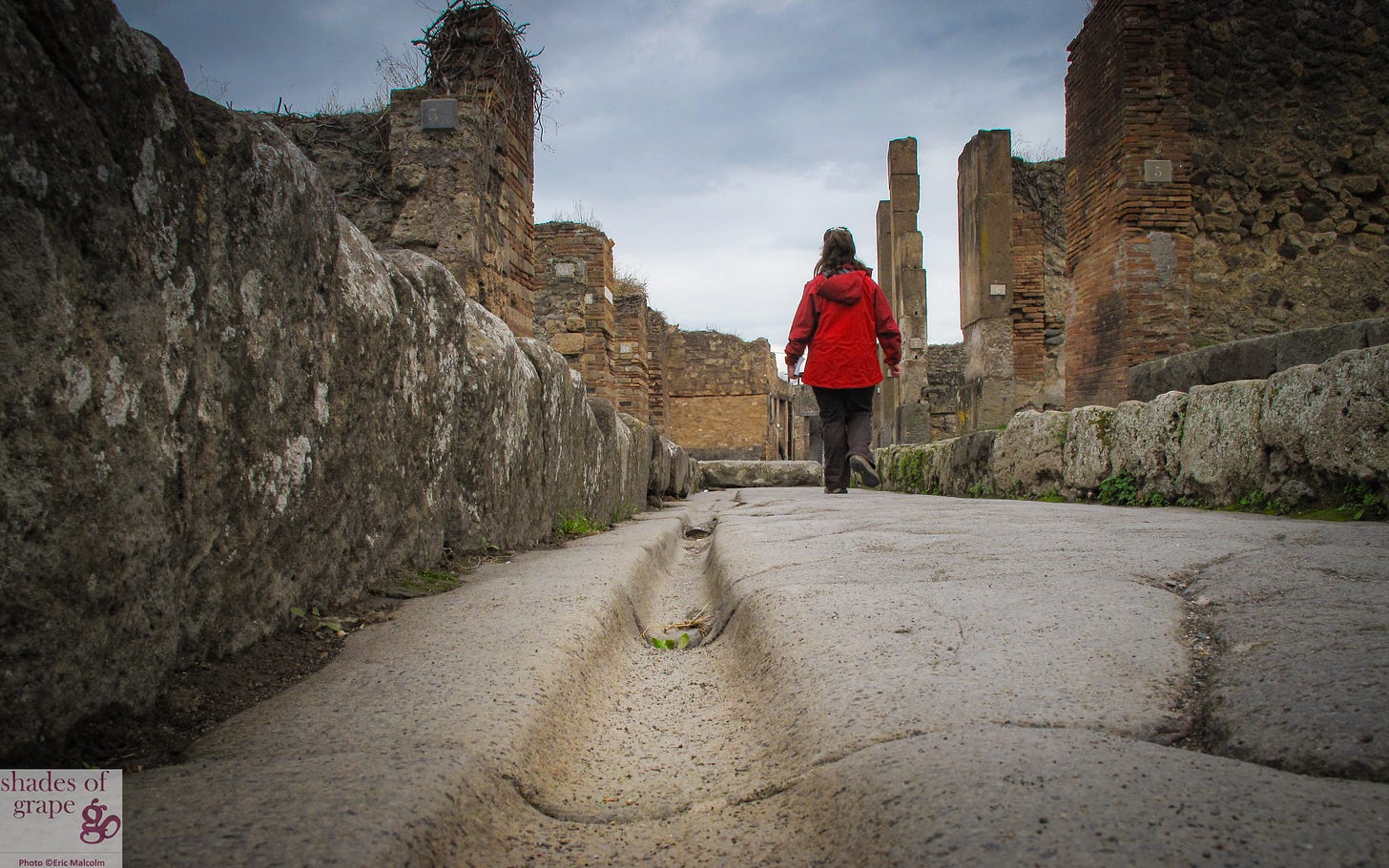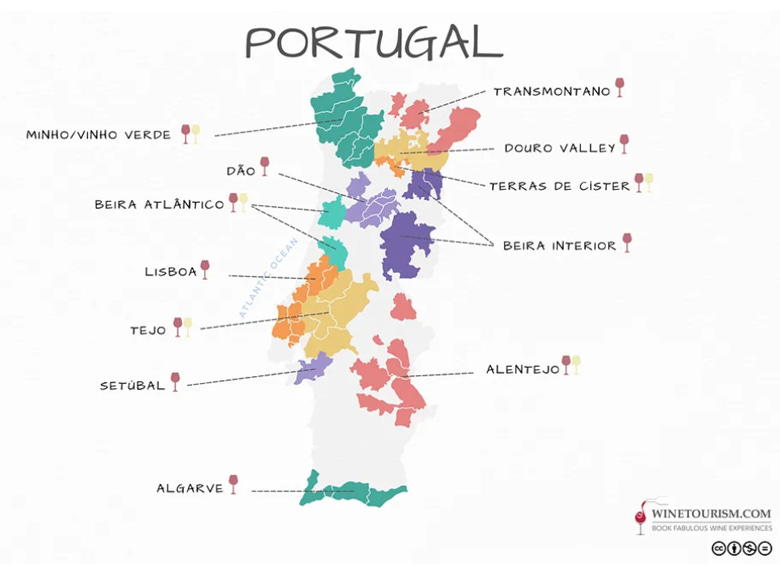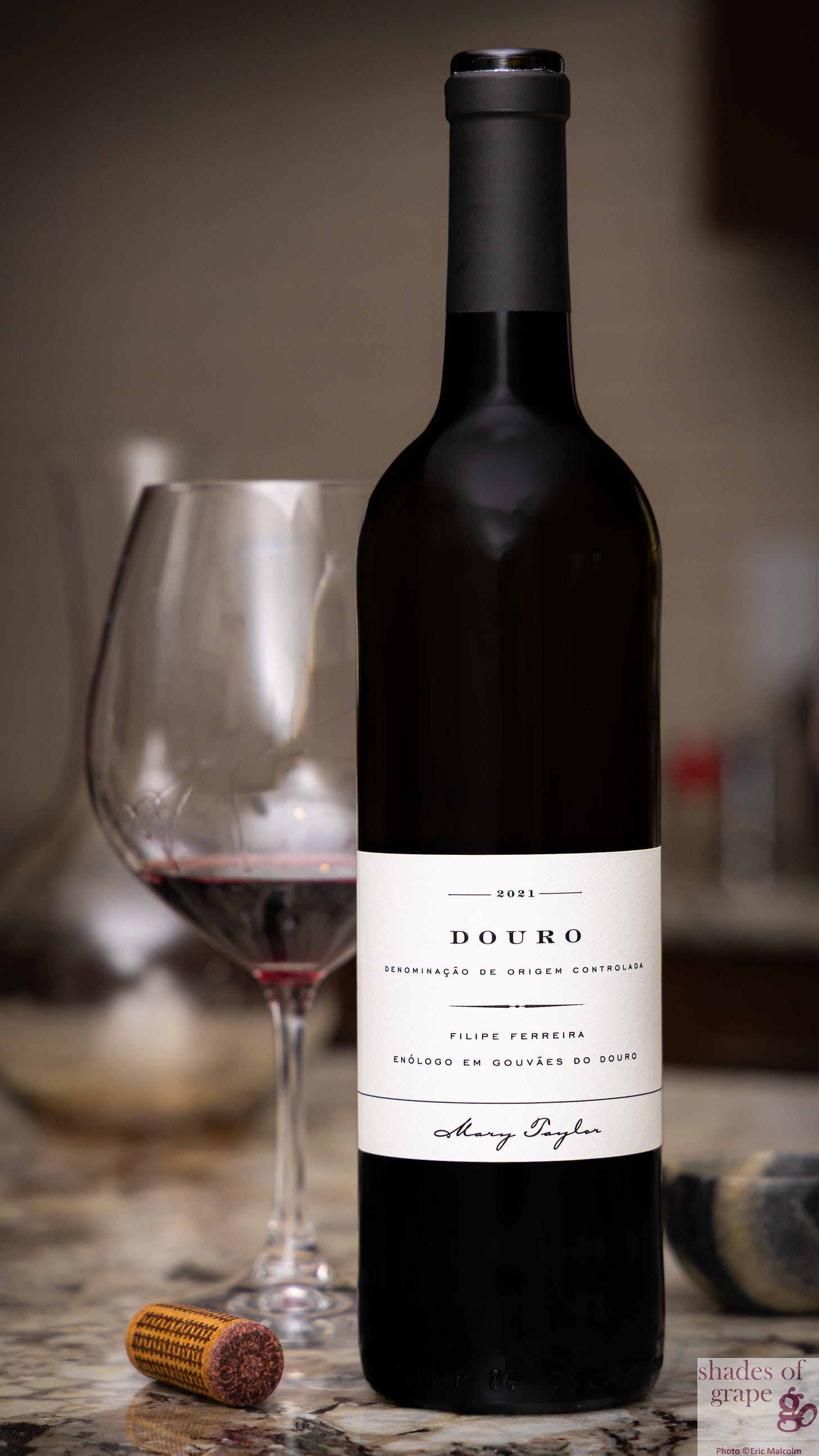Portugal Wine Over 4000 Years & Still Pouring
- terraced, textured, & totally delicious – that’s Douro!
Interested in one-on-one curation time with me? Please reach out! No commitment or minimum purchase required.
If you live in Edmonton - I am here for you too! (No, contrary to the rumours - Cork is NOT opening a store in Edmonton BUT we want to deliver to YOU!)
Thanks to all the paid subscribers for their support! This funding helps cover the costs involved in creating these weekly articles!
Appreciate my wine recommendations? Enjoy my personal wine curation service? Consider upgrading to a paid subscription! Help me continue sharing the world of wine with you.
You might say that a Portugal winery visit is one of the defining moments in my wine life.
Wine life … is that a thing?
Van life is a thing … why can’t wine life be a thing too?
After university, I backpacked in Europe on the cheap with a classmate, focusing on the countries with Mediterranean influences.
Portugal was one of them.
I am going to sign off, I am not much for Port or any fortified wines for that matter!
Hold on. The featured wine is actually a non-fortified wine.
What? Portugal makes still wines? How did I miss that?

Actually, in its 4000 years of history, Portugal mostly made non-fortified wines! But more on that later. Back to my post-uni days… When we hit Porto, the gang with whom I was travelling decided we should go visit a Port house.
My wine life was heavily influenced by my older siblings who were big into Port at that point, and therefore, so was I. We visited Sandeman, whose wines I had tasted in Winnipeg, so in my initial (significant) maiden voyage away from the motherland, the familiarity was heartwarming.
I loved how the tour expanded my knowledge by introducing me to white and rosé ports too.
What rosé and white port? I had no idea.
Neither did I. I loved everything about that visit and the wines. I do not remember if we tasted non-fortified wines, however.
This started a lifelong wine tourism trend, finding excuses to visit wine regions, dragging my travel mates along to wineries in the most (wine) obscure places, including even Mexico!
Wine life, baby!
What was also cool was learning more about it in my wine courses. The history is so interesting. It filled in so many blanks in my understanding of wine, including the fact that Portugal produces so much more than sweet, fortified wine.
Today I will focus on Portugal wine history (briefly), as well as the Douro region where Port is also made.
Okay let’s do it!
History…
It goes WAY back … like WAY back to 2000 BC. Not a typo. I am not saying to the time of Christ. I am saying some 4000 years ago.
(insert stunned face)
We are talking about civilizations I know nothing about: Tartessians, Iberian Celts and others we are all more familiar with: Phoenicians, Greeks and Romans.
As with any market, there are ebbs and flows, as occurred in Portugal for 4000 years.
Oh gosh, please not a 4000-year lesson in Portuguese wine history … snooze!
Agreed – but let me give you this small glimpse into the history – the part that makes me chuckle the most, likely because of my French-Canadian (emphasis on both elements …) background, particularly with the “current history”.
Let’s go to the 17th century where most of the wine was dry, with a small amount of brandy added to preserve the wine to make the long journey to their export markets via high seas. England and France were at war, which led England to go to Portugal for their wine comfort. This was nothing new as Portuguese wine had been exported to England since the 12th century, but this reinforced the union.
Then there was the Methuen Treaty of 1703 that set a lower rate of English duty for Portuguese vs. French wines. It was like a modern-day tariff war.
… (insert shock and awe) …
You said the featured wine was a non-fortified Portuguese wine. I saw from the map that there are many wine regions – what are we focusing on?
The same region where Port is created. It is called Douro, named after the Douro River that runs through it. This river carved out an amazing valley with extremely steep slopes with the vines planted on terraces.
The Douro is a continuation of the “Spanish” Duero River, which immediately switches names upon crossing the Spanish-Portuguese border and continues about 90 km to the city of Porto.
The region has hundreds of indigenous grape varieties but there are 5 black grapes that are the most important. They are mostly blended: Tinta Barroca, Tinta Roriz (Tempranillo across the Spanish border), Tinto Cao, Touriga Franca, and Touriga Nacional. The key white varieties are: Gouveio, Malvasa Fina, Moscatel, Rabigato, and Viosinho. The same grapes produce Port or non-fortified wines.
The featured wine is 60% Touriga Nacional, 25% Tinta Roriz (Tempranillo), and 15% Touriga Franca. You may remember my article about the wine merchant Mary Taylor. This Douro featured wine is one she imports to North America.
I think its going to be a hit! Check out more below!
Enjoying my recommendations? Consider upgrading to a paid subscription.
Mary Taylor Douro 2021 from Douro, Portugal
Style: Medium Body Fruit-Driven Red Wine
Varieties: 60% Touriga Nacional, 25% Tinta Roriz (Tempranillo), and 15% Touriga Franca
This is a deep wine with a dynamic palate of brighter purple fruit. Floral notes are joined with the complexity of red plum, sweet red cherries, sour blackberry, blueberry, vanilla bean, baking spice, dark chocolate, hints of smoke and tobacco, and earth. The tannins are on the high side of moderate with a slightly grainy texture and a persistent finish. I must also comment that for the price, this wine is an extremely good value.
Best pairings: Grilled or roasted meats (pork or lamb), Chorizo, Feijoada (bean and meat stew), Beef Bourguignon, Mushroom dishes (beef Stroganoff, grilled portobellos, wild mushroom pasta), Aged cheese: Manchego or sharp Cheddar.
Serving Temperature: 16-18 degrees Celsius
Serving Tips: Pour into a decanter and enjoy!
Price: ~$24 Cdn
If you're in Alberta and want a one-on-one wine curation experience, please reach out! No commitment or minimum purchase required. Interested? Please reach out!
If you live in Edmonton - I am here for you too! (No, contrary to the rumours - Cork is NOT opening a store in Edmonton BUT we want to deliver to YOU!)
A huge thank you to my paid subscribers—your support helps cover the costs of creating these weekly articles.
Love my wine recommendations? Enjoy my personal wine curation service? If you find value in my writing, consider upgrading to a paid subscription to help me keep sharing the world of wine with you!
Like what you are reading? Click on the ❤ to let me know it resonated with you!
SOURCES:
Free wine maps to download (no date) WineTourism.com. Available at: https://www.winetourism.com/wine-maps/?utm_source=chatgpt.com#Maps-of-Portuguese-wine-regions (Accessed: 03 July 2025).
Harding, J. and Robinson, J. (2023) The oxford companion to wine. Oxford, United Kingdom: Oxford University Press.
History of Portugal (no date) History. Available at: https://www.winesofportugal.com/en/discover/history/ (Accessed: 03 July 2025).
MacNeil, K. (2022) The wine bible. New York, NY: Workman Publishing.
Webcomum (no date) The history of the Douro Valley, Fonseca Porto. Available at: https://www.fonseca.pt/en/vineyards-and-douro/douro-valley/history?utm_source=chatgpt.com (Accessed: 03 July 2025).
Wine & Spirit Education Trust (2021) D3: Wines of the World - An accompaniment to the WSET Level 4 Diploma in Wines. Version 1.2. London: Wine & Spirit Education Trust.
Wine tourism. Available at: https://www.winesofportugal.com/en/discover/wine-tourism/ (Accessed: 03 July 2025).




